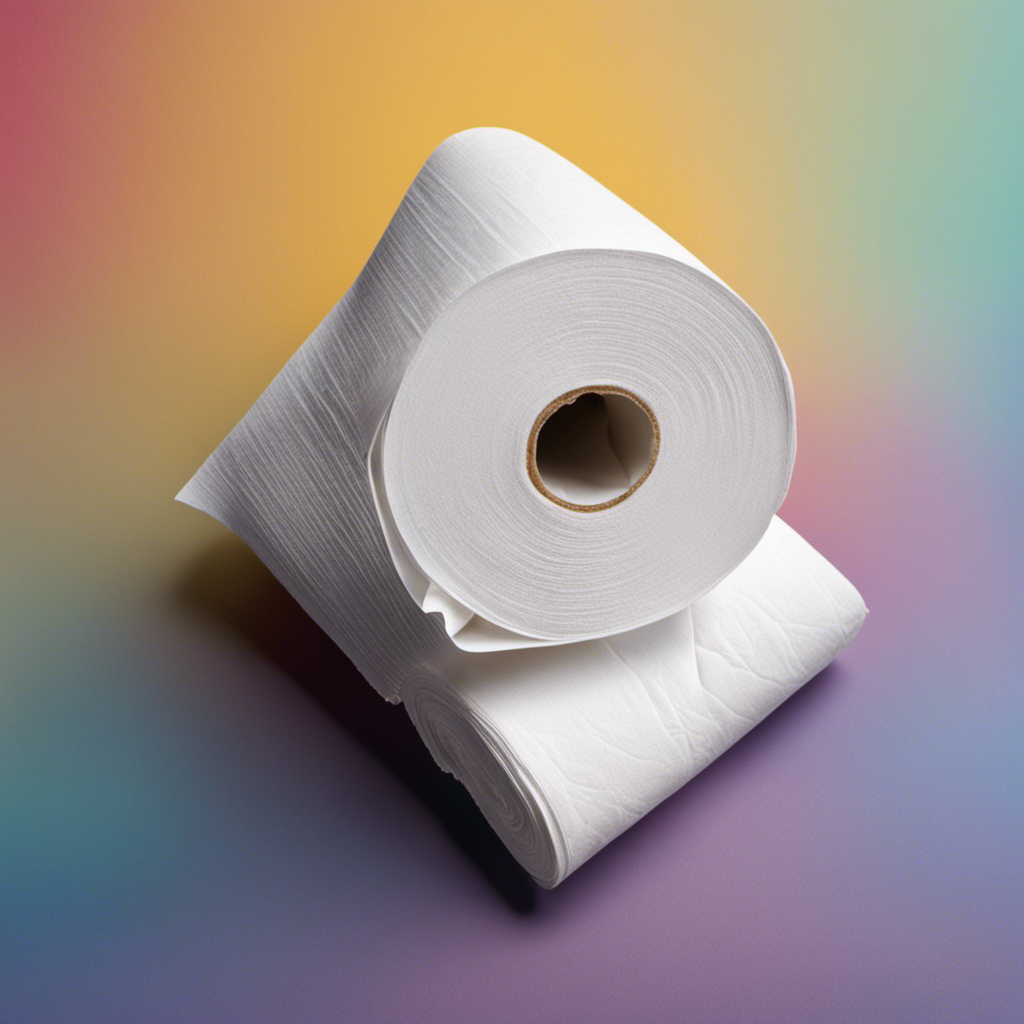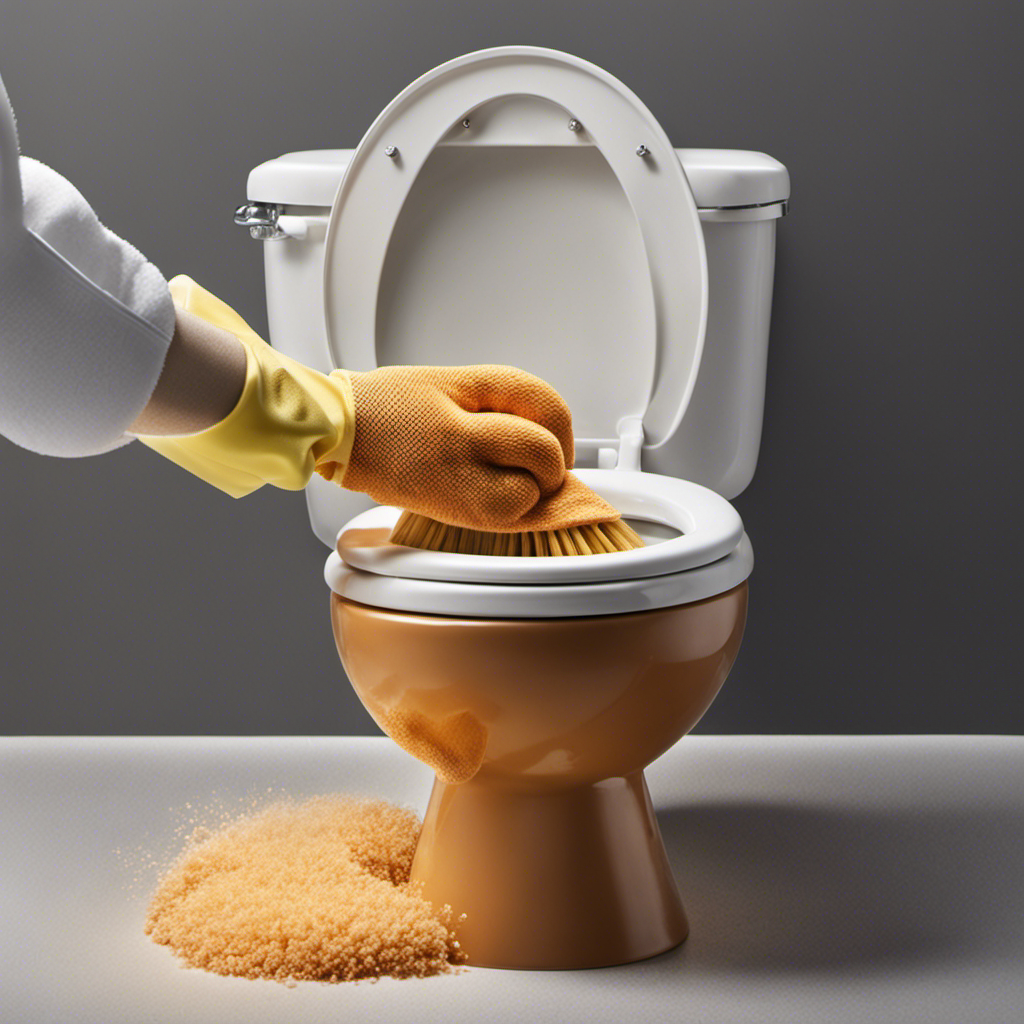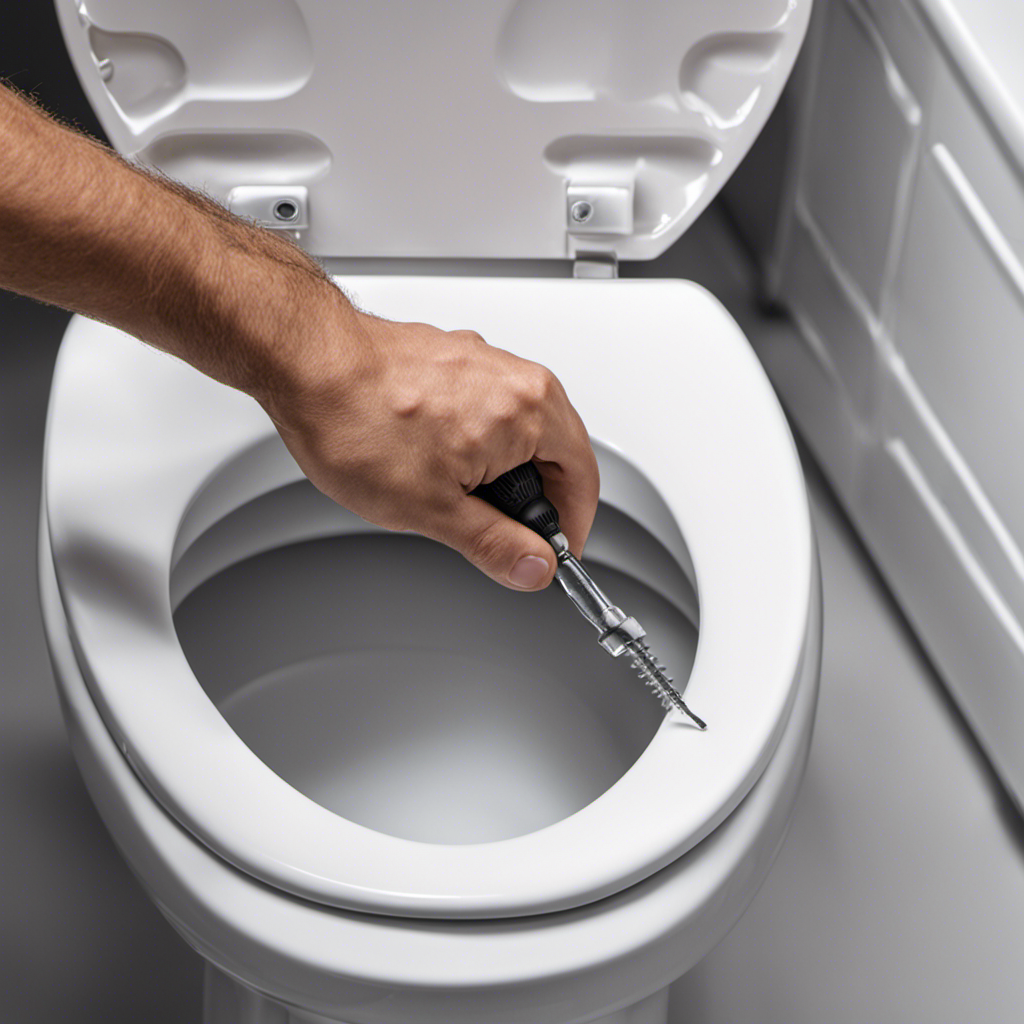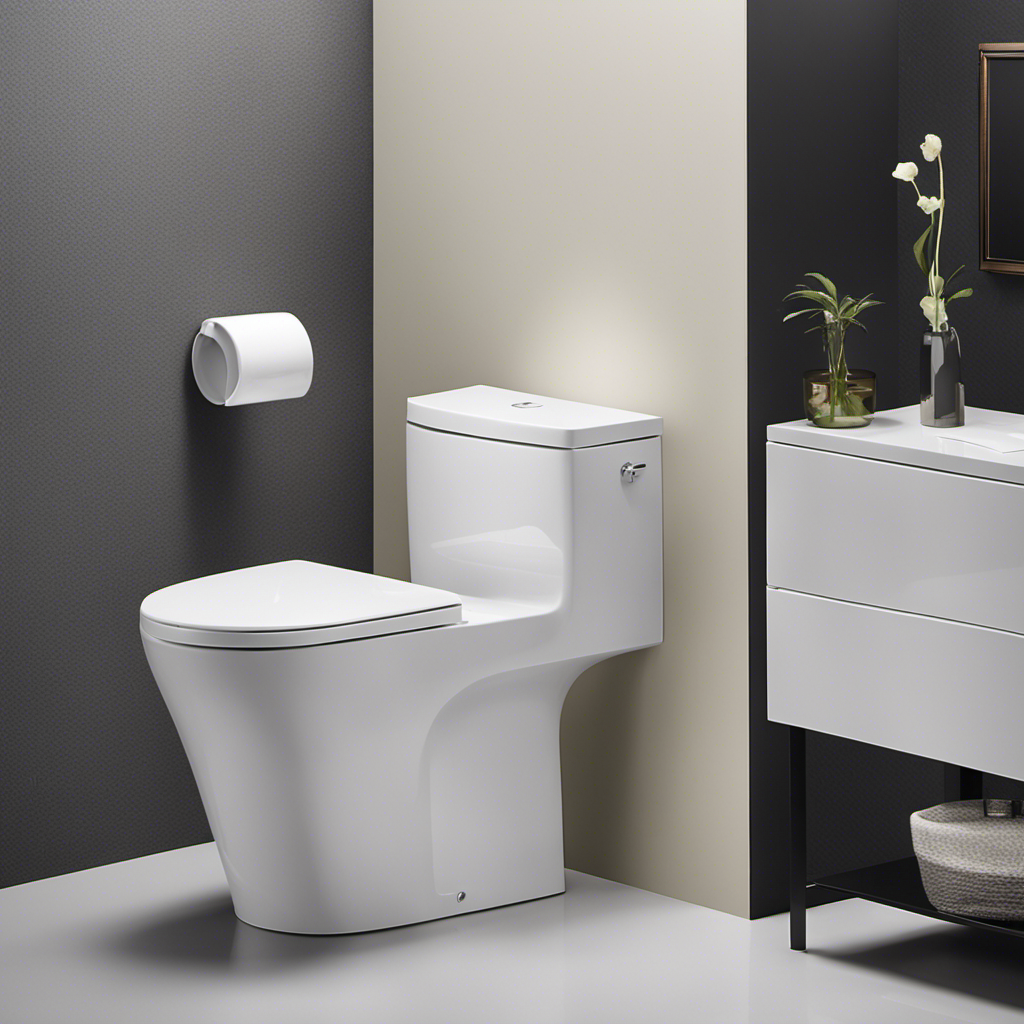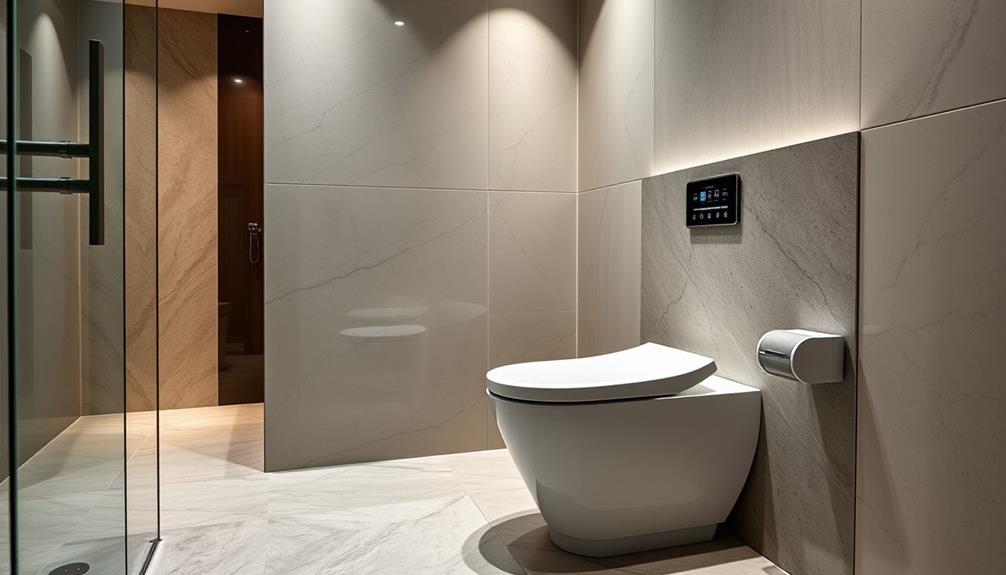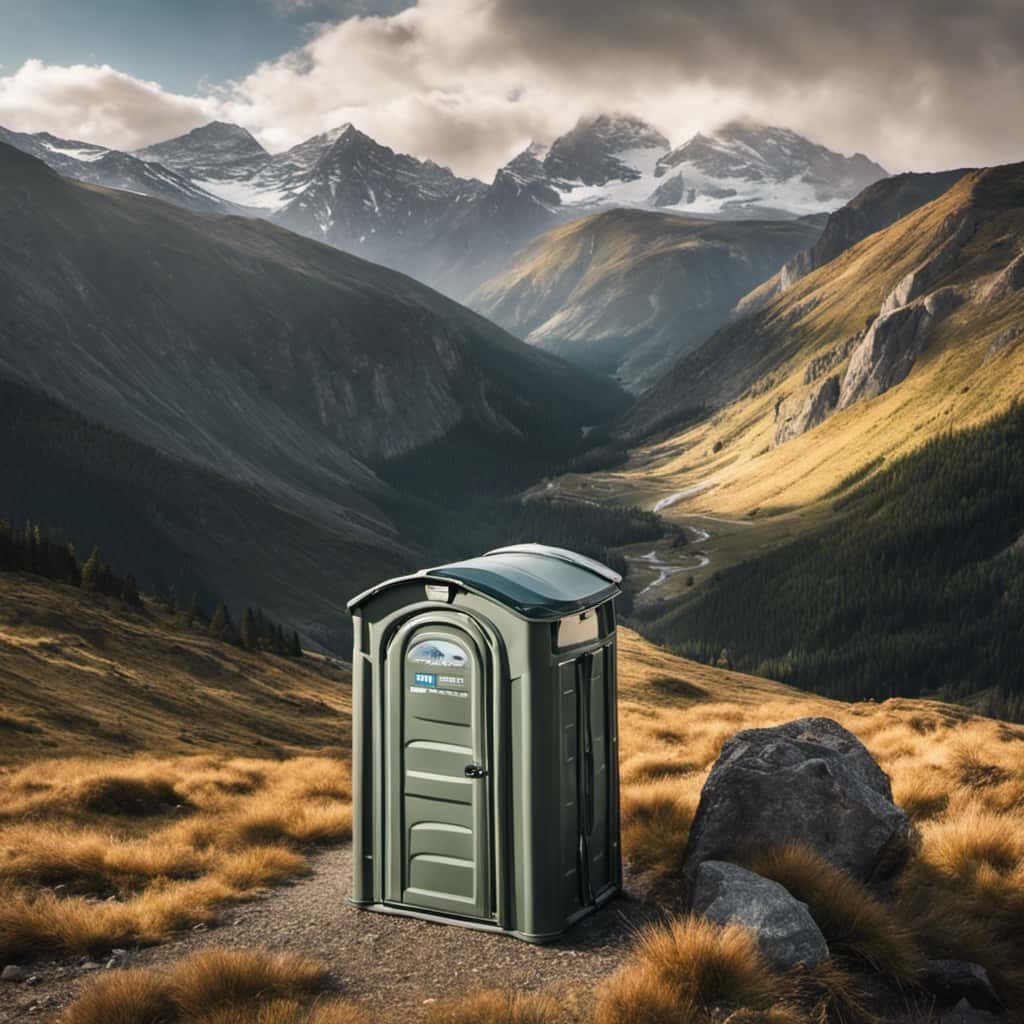Hey there!
Ever wondered how long you can use toilet paper as a pad? Well, I’ve got some surprising information for you.
In this article, we’ll dive into the safety, durability, and potential risks of using toilet paper as a pad. We’ll also explore the recommended maximum usage time and discuss alternatives that might just change your whole perspective.
So, let’s get down to business and put this toilet paper dilemma to rest once and for all!
Key Takeaways
- Toilet paper is not designed for menstrual use and may not provide adequate protection against leaks or discomfort.
- Using toilet paper for an extended period can increase the risk of irritation and infection.
- Toilet paper is not designed to handle heavy flow, leading to limited absorbency.
- Toilet paper should only be used as a temporary solution until a proper pad or alternative can be accessed.
Safety and Hygiene Considerations
You should always prioritize safety and hygiene when using toilet paper as a pad. While it may be a temporary solution, it is important to understand the potential risks involved.
Toilet paper is not designed to be a menstrual product, and it may not provide adequate protection against leaks or discomfort. Additionally, using toilet paper for an extended period can increase the risk of irritation and infection.
It is recommended to use proper feminine care products, such as sanitary pads or tampons, which are specifically designed to absorb menstrual flow and maintain hygiene. Alternatively, you could consider using a menstrual cup, which is a reusable and eco-friendly option that collects the flow instead of absorbing it.
Durability and Absorbency
The durability and absorbency of toilet paper as a makeshift pad may vary. When it comes to using toilet paper as a substitute for a menstrual pad, it’s important to consider both its environmental impact and cost effectiveness.
Toilet paper is designed for single-use purposes, such as wiping and cleaning. It is not specifically designed to handle heavy flows or provide long-lasting protection. However, in emergency situations or when other options are not available, toilet paper can be used as a temporary solution.
Toilet paper’s absorbency and durability can vary depending on the brand and quality. Some toilet paper brands are more absorbent than others, while others may tear easily when wet. It’s important to choose a brand that is thicker and more durable to provide better protection.
In terms of environmental impact, using toilet paper as a pad may not be the most sustainable option. Toilet paper production requires cutting down trees and consumes a significant amount of water and energy. Additionally, the disposal of used toilet paper can contribute to waste and pollution.
From a cost effectiveness standpoint, toilet paper is generally a cheaper option compared to traditional menstrual pads. However, it’s important to consider the potential health risks and discomfort that may arise from using toilet paper for an extended period of time.
In conclusion, while toilet paper can serve as a temporary solution in emergencies, it is not the most ideal or sustainable option for using as a pad. It is important to prioritize your health and safety by using proper menstrual hygiene products whenever possible.
| Durability | Absorbency | Environmental Impact | Cost Effectiveness |
|---|---|---|---|
| Varies | Varies | Negative | Affordable |
Potential Risks and Limitations
When using toilet paper as a makeshift pad, it’s important to consider the potential risks and limitations. While it may be a convenient option in certain situations, there are a few things to keep in mind:
-
Limited Absorbency: Toilet paper is not designed to handle heavy flow, so it may not provide sufficient protection for extended periods of time.
-
Irritation and Allergies: Some individuals may be sensitive to the materials used in toilet paper, which can lead to skin irritation or allergic reactions.
-
Potential Leakage: Toilet paper may not have the same leak-proof properties as commercial sanitary pads, increasing the risk of leaks and stains.
Considering these risks and limitations, it’s important to use toilet paper as a temporary solution and seek proper menstrual products as soon as possible.
Transitioning into the next section, it’s crucial to understand the recommended maximum usage time for toilet paper as a pad.
Recommended Maximum Usage Time
It’s important to be aware of the recommended maximum usage time for using toilet paper as a makeshift pad. While toilet paper can be a convenient option in certain situations, it’s crucial to prioritize your health and safety.
According to recommended usage guidelines, toilet paper should only be used as a temporary solution until a proper pad or alternative can be accessed. Prolonged use of toilet paper as a pad can lead to potential health concerns such as irritation, infection, and leakage. Therefore, it is advisable to limit the use of toilet paper as a pad to a maximum of a few hours.
It’s essential to explore alternatives to toilet paper as a pad that are specifically designed for menstrual hygiene, providing better protection and reducing the risk of health issues.
Alternatives to Toilet Paper as a Pad
Consider trying out different options that can serve as a suitable replacement for toilet paper when it comes to using it as a makeshift pad. There are various reusable options and DIY alternatives that can provide comfort and convenience during emergencies or when traditional pads are not available.
Here are three options to consider:
-
Cloth pads: These are reusable pads made from fabric that can be washed and reused. They come in different sizes and absorbencies, providing a sustainable and cost-effective alternative to disposable pads.
-
Menstrual cups: These are small, bell-shaped cups made of medical-grade silicone or latex that are inserted into the vagina to collect menstrual blood. They can be reused for several years, reducing waste and saving money in the long run.
-
DIY pads: If you don’t have access to store-bought alternatives, you can create your own pads using materials like old t-shirts or towels. Simply cut them into the desired shape and size, and secure them in your underwear using safety pins or sewing. While not as convenient as store-bought options, DIY pads can be a temporary solution when needed.
Conclusion
In conclusion, it has been determined that using toilet paper as a pad is not recommended or safe for long-term use. After thorough investigation and research, it is clear that toilet paper is not designed or tested for prolonged absorption or durability. While it may seem convenient in certain situations, using toilet paper as a pad can pose risks such as leakage, irritation, and potential infections. Therefore, it is crucial to prioritize personal hygiene and explore alternative options that are specifically designed for menstrual or incontinence needs.
